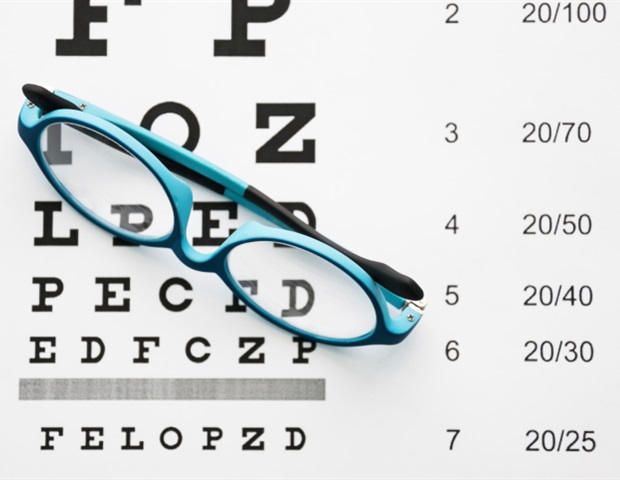
Jennifer J. Lentz, PhD, Associate Professor at LSU Health New Orleans Neuroscience Center of Excellence and Departments of Otorhinolaryngology, Genetics and Ophthalmology, in collaboration with Robert K. Koenekoop MD, PhD and Professor of Pediatric Surgery, Human Genetics and Ophthalmology at McGill University in Montreal, Quebec, Canada, has been awarded a $1.74 million USD grant to advance research on Usher syndrome. The five-year grant was awarded by the National Eye Institute of the National Institutes of Health (NIH.)
"The long-term goal of this project is to develop an effective treatment for vision loss in Usher using antisense therapy," says Dr. Lentz. Antisense therapy uses antisense oligonucleotides (ASO) to change the way genes make proteins. NIH defines antisense oligonucleotides as "small pieces of DNA or RNA that can bind to specific molecules of RNA. This blocks the ability of the RNA to make a protein or work in other ways." Usher syndrome is a rare disease characterized by concurrent hearing and vision loss. The loss of both hearing and vision creates a major communication burden and affects all aspects of life, including health, education, social activities and employment.
Usher syndrome is associated with mutations in 16 different genes creating four distinct clinical types. Usher-related genes and proteins express multiple tissue-specific variants that change over time, which creates a barrier to therapeutic strategies using gene-replacement therapy. Lentz's research targets the human 216A mutation in the USH1C gene that causes Type 1C Usher Syndrome in the Acadian population.
"Using a well-validated Usher 1C mouse model that contains this human 216A mutation, we demonstrated that ASO treatment shows appreciable and significant rescue of vision and hearing," adds Lentz, who also holds the Charles I Berlin Endowed Chair. "Therefore, the first aim of this study is to identify and characterize an USH1C-ASO drug therapy molecule that most effectively targets the 216A mutation and treats vision loss. We will test USH1C-targeted ASOs with different sequences and chemistries for efficacy and tolerability in Ush1c mice and patients' cells."
The second aim is to determine which visual tests are the most likely to document improvement in vision and safety, i.e., the most robust clinical endpoints and identify potential trial participants to guide a clinical trial. For the clinical aspect, Lentz is working with Dr. Maria Reinoso, Associate Professor of Ophthalmology at LSU Health New Orleans, and Dr. Koenekoop, who is also Senior Clinician-Scientist at the Research Institute of the McGill University Health Centre in Canada. To date, 62 USH1C patients have been identified in the three participating clinical centers.
"The patients will be invited to enroll in a two-year, prospective natural history study where we will measure standard of care and novel retinal and visual parameters at six-month intervals," says Lentz. "These tests will allow us to define the clinical parameters to determine the outcome of our future trial. Successful completion of the proposed studies, will identify a lead ASO-drug candidate, demonstrate its preclinical efficacy, and determine measurable clinical outcomes to guide a first-in-man ASO-based treatment for vision loss in USH1C."
The clinical research is additionally supported by a $40,000 donation to Lentz's and Reinoso's work from Ush One See Foundation, and a $453,920 grant from Fighting Blindness Canada to Koenekoop's research.
Ush One See, a local patient advocacy group that funds research to help bring therapies to those within the Louisiana community affected by Usher syndrome has supported Lentz's work for years. "Ush One See is thrilled assist Dr. Jen Lentz's lab reach the same playing field among the most advanced centers for blinding eye diseases. We are looking forward to what her lab can offer for patients like our 8 year son, Hunter, and so many others from the Acadiana region."
"I am extremely excited to continue working with the LSU group headed by Dr. Lentz," says Koenekoop. "We, in Montreal, have been following USH1C patients for over 20 years, and this next step in our collaboration and novel study provides solid hope for them, first in a better understanding of the visual loss with the natural history study, and secondly for potentially identifying patients for future therapy studies" says Koenekoop.
The Quebec Acadian patients are related and akin to the Cajun patients of south Louisiana with the exact same gene, mutation and disease. The historical link is the Expulsion of the Acadians, also known as the Great Expulsion and Le Grand Dérangement, starting in 1755, which represents the forced removal by the British of the Acadian people from the present day Canadian Maritime Provinces. Some Acadians settled in various locations along the Eastern Seaboard of the United States, however most followed the path that led to New Orleans, Louisiana. The Acadians who settled throughout south Louisiana became known as "Cajuns."
"Because these patients have the same mutation and similar genetics through this relationship, they may have a similar course of disease progression and thus may respond in similar ways to our therapies. This is an important aspect of our study because it may diminish the variability and increase the therapeutic signal," says Koenekoop.
The success of clinical trials relies on the participation of patient volunteers, which we commend people living with the USH1C gene stepping up to help others around the world by advancing scientific discovery. Drs. Koenekoop and Lentz are trail blazers offering hope to thousands of families that restoring sight is possible. Fighting Blindness Canada's donors are proud to support this groundbreaking work."
Doug Earle, President & CEO of Fighting Blindness Canada
Louisiana State University Health Sciences Center






No comments
Post a Comment